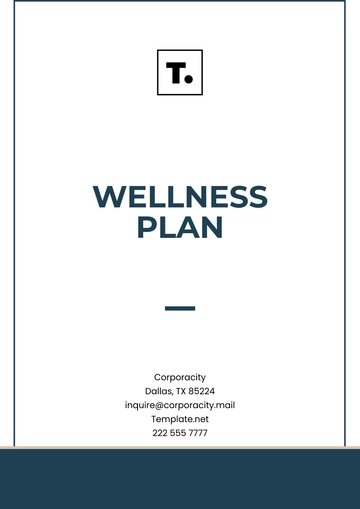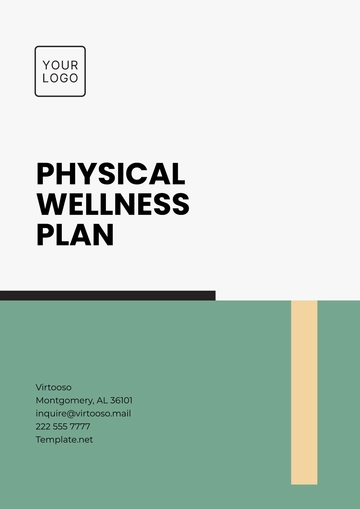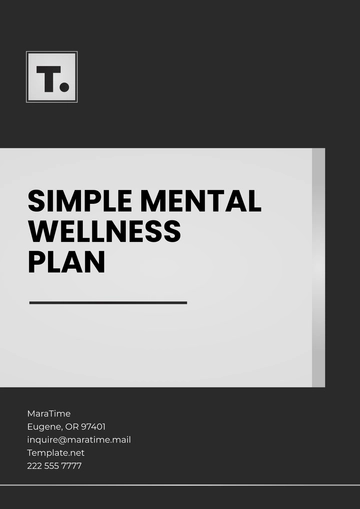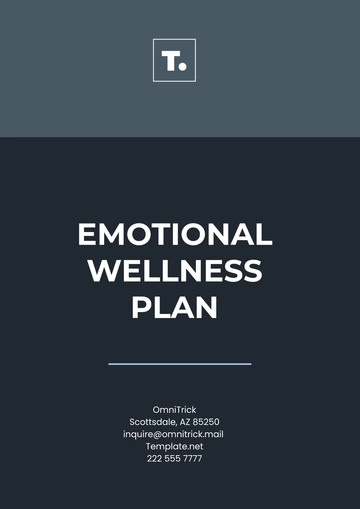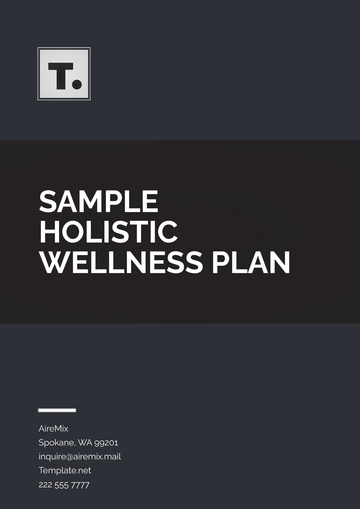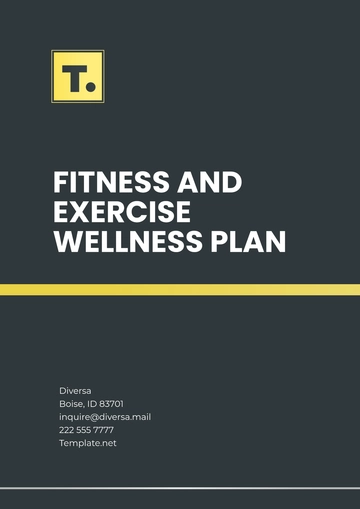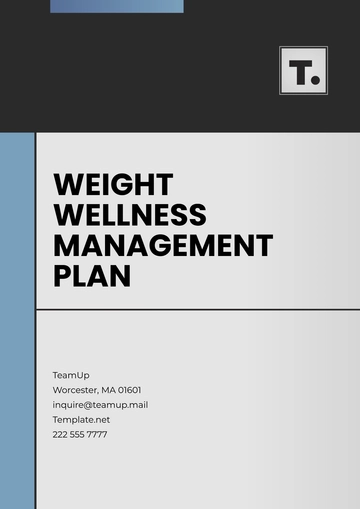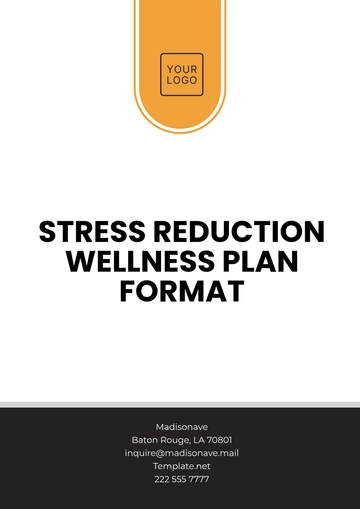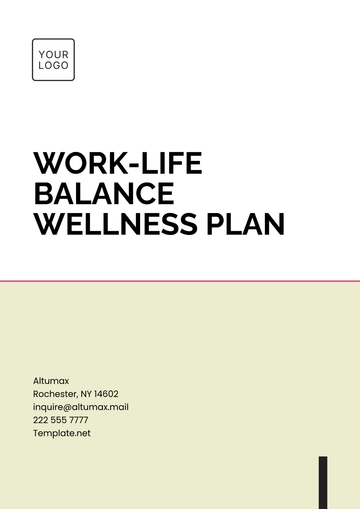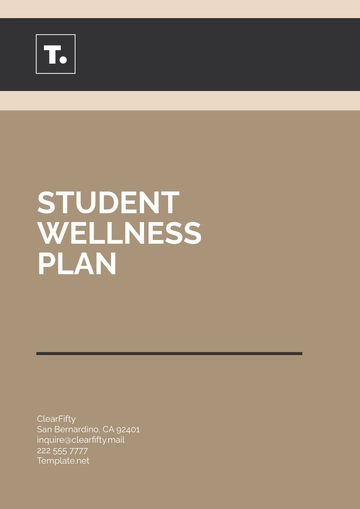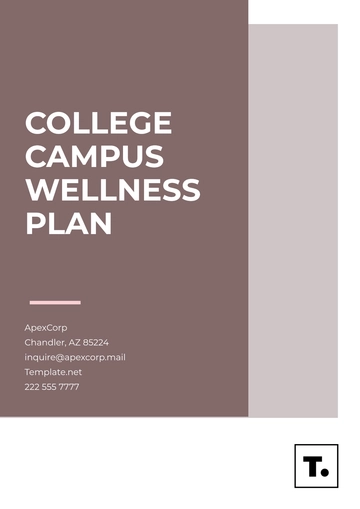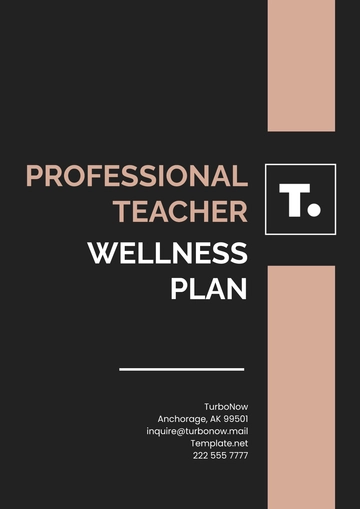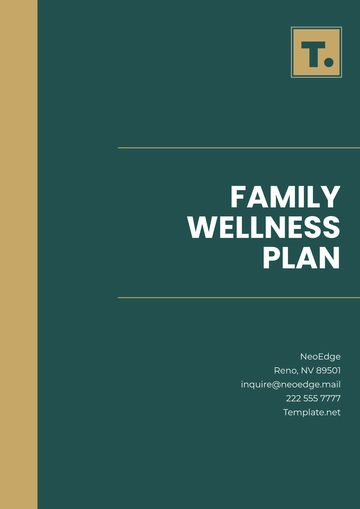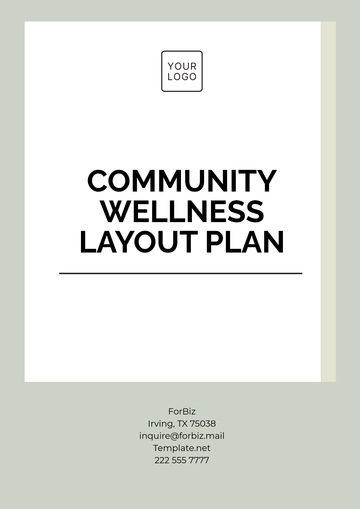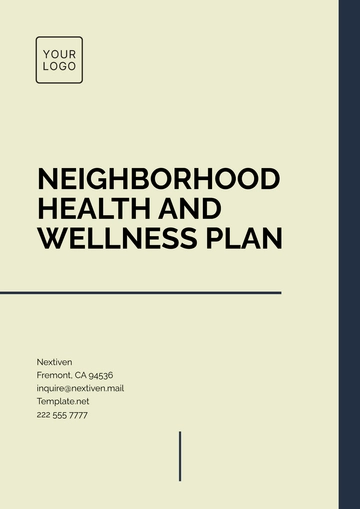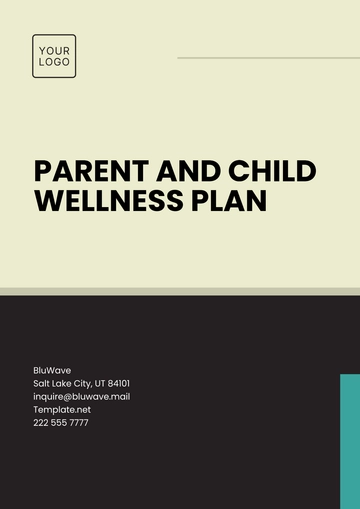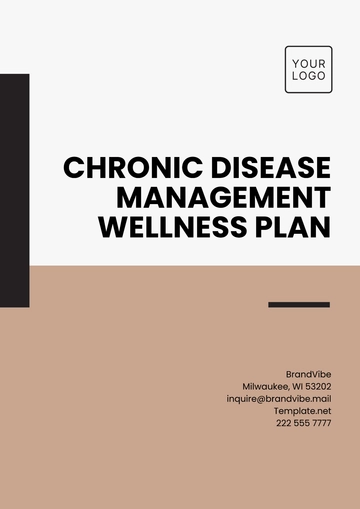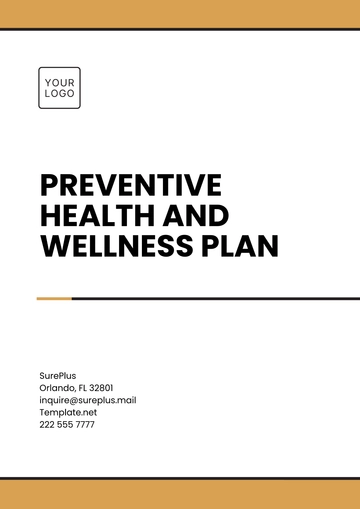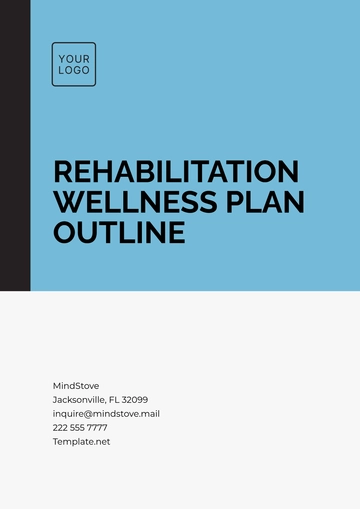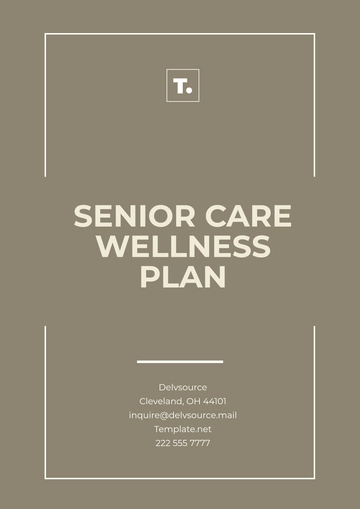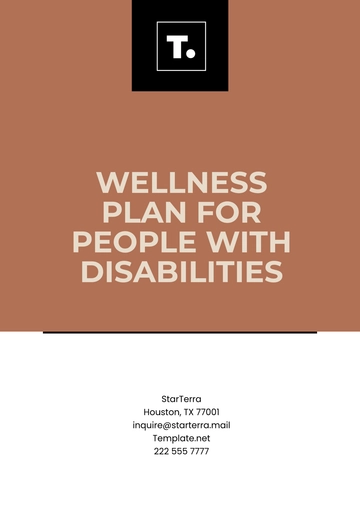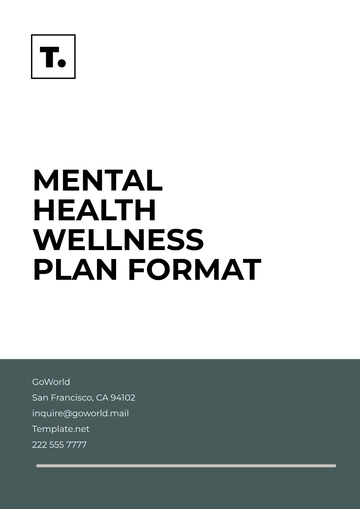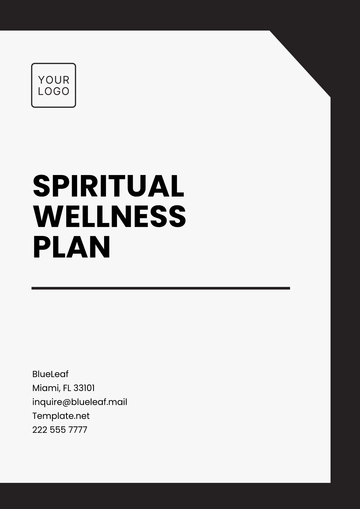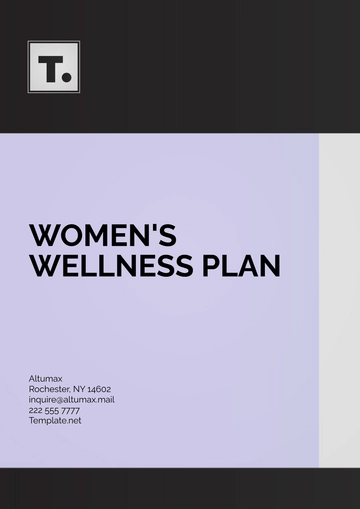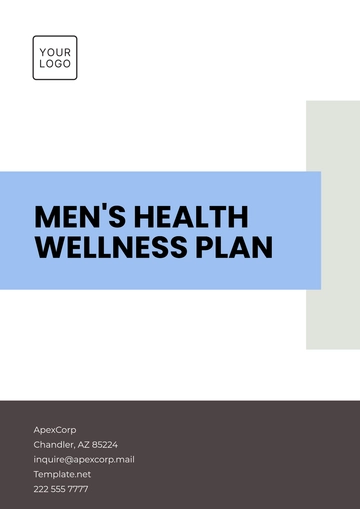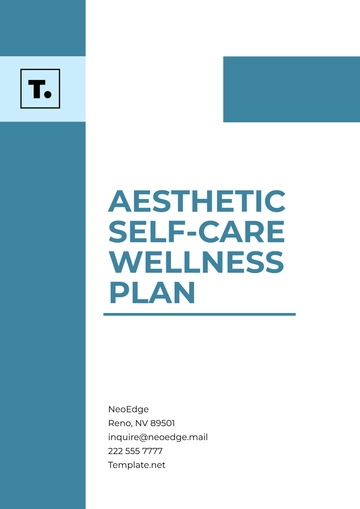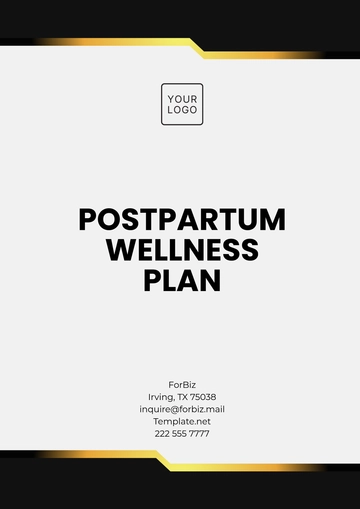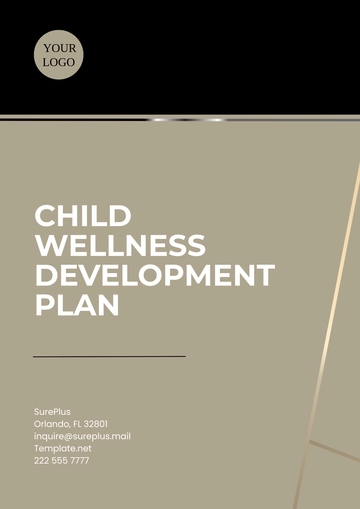Free Work-Life Balance Wellness Plan
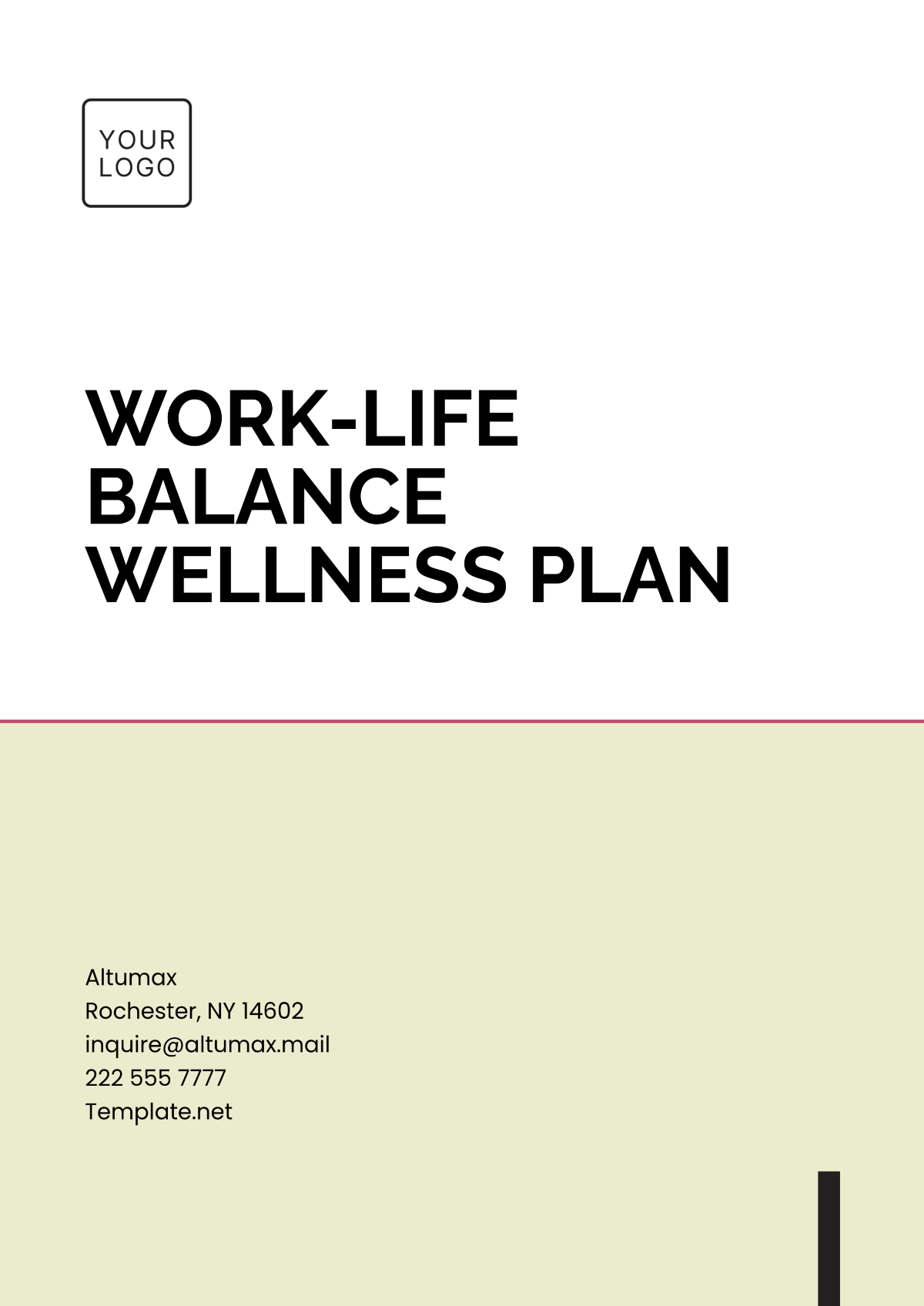
Prepared by: [Your Name]
Company: [Your Company Name]
Date: [Insert Date]
I. Introduction
In today's fast-paced world, maintaining a healthy work-life balance is essential for overall well-being. The Work-Life Balance Wellness Plan is designed to help individuals manage the demands of their professional and personal lives. By fostering a culture of balance, this plan aims to promote mental, emotional, and physical wellness while enhancing productivity and job satisfaction. This comprehensive plan outlines strategies to improve time management, reduce stress, and ensure that work responsibilities do not overshadow personal life.
II. Vision and Goals
Vision:
To create a harmonious and balanced environment where individuals can excel in their professional lives while maintaining personal well-being, fulfilling relationships, and a healthy lifestyle.
Goals:
Support Healthy Boundaries: Encourage individuals to set and maintain boundaries between work and personal life to reduce burnout and stress.
Foster Flexibility: Promote flexible working hours and remote work options to allow employees to manage their personal and professional responsibilities effectively.
Promote Time Management Skills: Provide resources to improve time management, helping individuals prioritize tasks and responsibilities efficiently.
Enhance Emotional and Mental Health: Offer support systems to help individuals manage stress, increase emotional resilience, and improve mental health.
Encourage Healthy Lifestyle Choices: Provide opportunities for physical activity and wellness initiatives to improve overall health and well-being.
III. Key Areas of Focus and Strategies
A. Setting Healthy Work-Life Boundaries
Strategies:
Clear Work Hours: Encourage employees to set clear start and end times for their workday, ensuring they can disconnect and spend quality time on personal activities.
No After-Hours Communication Policy: Promote policies that limit work-related communications (emails, calls) after work hours to prevent burnout and allow for personal time.
Respect Personal Time: Educate leadership and team members on the importance of respecting each other's time and fostering a supportive, understanding work environment.
B. Flexible Work Options
Strategies:
Remote Work Opportunities: Offer the option to work from home or remotely, providing flexibility to manage personal commitments without sacrificing work performance.
Flexible Hours: Allow employees to adjust their work hours to accommodate personal responsibilities, such as family care, appointments, or pursuing hobbies.
Job Sharing: Provide job-sharing arrangements for employees who may want to work reduced hours while still contributing to the organization's success.
C. Time Management and Prioritization
Strategies:
Time Management Workshops: Provide training on time management techniques, such as prioritizing tasks, setting realistic goals, and breaking down large tasks into manageable steps.
Task Management Tools: Encourage the use of productivity tools (e.g., digital calendars, and project management software) to help employees stay organized and meet deadlines.
The Pomodoro Technique: Introduce time management methods like the Pomodoro Technique, which encourages taking regular breaks and working in focused intervals to improve productivity.
D. Stress Management and Mental Health Support
Strategies:
Stress Reduction Programs: Implement workshops on stress management techniques, including mindfulness, deep breathing, and relaxation practices to help employees manage work pressure.
Counseling Services: Provide access to mental health resources, such as Employee Assistance Programs (EAPs) or counseling services, to support employees in managing stress and personal challenges.
Mental Health Days: Offer paid mental health days as part of the benefits package to allow employees to recharge when feeling overwhelmed.
E. Encouraging Physical Wellness
Strategies:
On-Site Fitness Facilities or Discounts: Provide on-site gyms or partner with local fitness centers to offer discounted memberships to promote regular physical activity.
Wellness Challenges: Organize company-wide wellness challenges, such as step contests, fitness classes, or yoga sessions, to encourage employees to stay active.
Ergonomic Workstations: Ensure that workstations are ergonomically designed to reduce physical strain and discomfort during long hours at a desk.
F. Promoting Social Wellness
Strategies:
Team-Building Activities: Organize regular team-building events (e.g., virtual happy hours, retreats, volunteer activities) to foster social connection and a sense of community within the organization.
Support Networks: Develop peer support programs or mentoring initiatives to help employees build meaningful relationships and feel supported in their work and personal lives.
Encourage Breaks and Social Time: Promote the importance of taking breaks, socializing with coworkers, and stepping away from work to recharge.
IV. Implementation Plan
A. Roles and Responsibilities
Wellness Program Coordinators: Oversee the execution of the work-life balance initiatives and ensure resources are available to employees.
Leadership Team: Support and encourage the adoption of work-life balance practices, lead by example, and provide ongoing support for employees.
Employees: Actively engage in work-life balance strategies, set boundaries, and provide feedback on the effectiveness of the programs.
B. Timeline
Phase 1 (Month 1-3): Introduce time management and stress reduction workshops. Launch remote work and flexible hours options.
Phase 2 (Month 4-6): Implement wellness challenges and introduce on-site fitness options. Evaluate employee feedback and adjust programs as needed.
Phase 3 (Month 7-12): Expand support systems, such as counseling services and mentoring programs, and provide regular evaluations of work-life balance initiatives.
V. Measurement and Evaluation
Key Performance Indicators (KPIs):
Employee Satisfaction: Regular surveys to measure employee satisfaction with work-life balance policies and programs.
Workplace Productivity: Track productivity levels, absenteeism, and employee engagement as indicators of the effectiveness of work-life balance strategies.
Mental Health and Well-being: Measure improvements in mental health and stress levels through surveys and self-reports.
Employee Retention: Monitor turnover rates to evaluate whether work-life balance initiatives are contributing to employee retention.
Evaluation Methods:
Quarterly Surveys: Collect feedback on the effectiveness of work-life balance programs and make adjustments based on employee input.
Annual Review: Conduct an annual review to assess the impact of work-life balance initiatives on employee well-being and organizational performance.
VI. Sustainability Plan
Ongoing Engagement: Continuously offer new programs and resources based on evolving employee needs and wellness trends.
Leadership Commitment: Ensure that company leadership remains committed to work-life balance by setting an example and maintaining policies that support employees.
Employee Feedback: Regularly solicit feedback from employees to ensure that work-life balance programs remain relevant and effective.
Community and External Partnerships: Explore partnerships with external wellness providers to enhance resources, such as fitness centers, wellness retreats, and mental health support.
VII. Conclusion
The Work-Life Balance Wellness Plan is designed to create an environment where employees can thrive both personally and professionally. By implementing strategies that promote time management, stress reduction, physical wellness, and social connection, the plan helps individuals find balance in their busy lives. With leadership support, ongoing resources, and continuous evaluation, this plan aims to foster a healthier, happier, and more productive workforce.
- 100% Customizable, free editor
- Access 1 Million+ Templates, photo’s & graphics
- Download or share as a template
- Click and replace photos, graphics, text, backgrounds
- Resize, crop, AI write & more
- Access advanced editor
You may also like
- Finance Plan
- Construction Plan
- Sales Plan
- Development Plan
- Career Plan
- Budget Plan
- HR Plan
- Education Plan
- Transition Plan
- Work Plan
- Training Plan
- Communication Plan
- Operation Plan
- Health And Safety Plan
- Strategy Plan
- Professional Development Plan
- Advertising Plan
- Risk Management Plan
- Restaurant Plan
- School Plan
- Nursing Home Patient Care Plan
- Nursing Care Plan
- Plan Event
- Startup Plan
- Social Media Plan
- Staffing Plan
- Annual Plan
- Content Plan
- Payment Plan
- Implementation Plan
- Hotel Plan
- Workout Plan
- Accounting Plan
- Campaign Plan
- Essay Plan
- 30 60 90 Day Plan
- Research Plan
- Recruitment Plan
- 90 Day Plan
- Quarterly Plan
- Emergency Plan
- 5 Year Plan
- Gym Plan
- Personal Plan
- IT and Software Plan
- Treatment Plan
- Real Estate Plan
- Law Firm Plan
- Healthcare Plan
- Improvement Plan
- Media Plan
- 5 Year Business Plan
- Learning Plan
- Marketing Campaign Plan
- Travel Agency Plan
- Cleaning Services Plan
- Interior Design Plan
- Performance Plan
- PR Plan
- Birth Plan
- Life Plan
- SEO Plan
- Disaster Recovery Plan
- Continuity Plan
- Launch Plan
- Legal Plan
- Behavior Plan
- Performance Improvement Plan
- Salon Plan
- Security Plan
- Security Management Plan
- Employee Development Plan
- Quality Plan
- Service Improvement Plan
- Growth Plan
- Incident Response Plan
- Basketball Plan
- Emergency Action Plan
- Product Launch Plan
- Spa Plan
- Employee Training Plan
- Data Analysis Plan
- Employee Action Plan
- Territory Plan
- Audit Plan
- Classroom Plan
- Activity Plan
- Parenting Plan
- Care Plan
- Project Execution Plan
- Exercise Plan
- Internship Plan
- Software Development Plan
- Continuous Improvement Plan
- Leave Plan
- 90 Day Sales Plan
- Advertising Agency Plan
- Employee Transition Plan
- Smart Action Plan
- Workplace Safety Plan
- Behavior Change Plan
- Contingency Plan
- Continuity of Operations Plan
- Health Plan
- Quality Control Plan
- Self Plan
- Sports Development Plan
- Change Management Plan
- Ecommerce Plan
- Personal Financial Plan
- Process Improvement Plan
- 30-60-90 Day Sales Plan
- Crisis Management Plan
- Engagement Plan
- Execution Plan
- Pandemic Plan
- Quality Assurance Plan
- Service Continuity Plan
- Agile Project Plan
- Fundraising Plan
- Job Transition Plan
- Asset Maintenance Plan
- Maintenance Plan
- Software Test Plan
- Staff Training and Development Plan
- 3 Year Plan
- Brand Activation Plan
- Release Plan
- Resource Plan
- Risk Mitigation Plan
- Teacher Plan
- 30 60 90 Day Plan for New Manager
- Food Safety Plan
- Food Truck Plan
- Hiring Plan
- Quality Management Plan
- Wellness Plan
- Behavior Intervention Plan
- Bonus Plan
- Investment Plan
- Maternity Leave Plan
- Pandemic Response Plan
- Succession Planning
- Coaching Plan
- Configuration Management Plan
- Remote Work Plan
- Self Care Plan
- Teaching Plan
- 100-Day Plan
- HACCP Plan
- Student Plan
- Sustainability Plan
- 30 60 90 Day Plan for Interview
- Access Plan
- Site Specific Safety Plan
